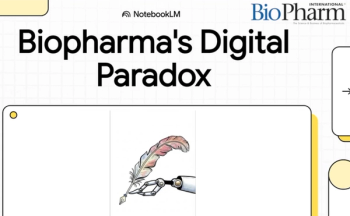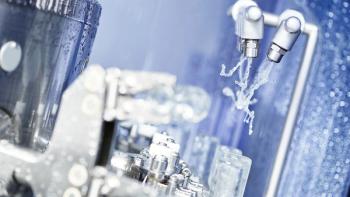
- BioPharm International-09-01-2014
- Volume 27
- Issue 9
Managing Cleaning Validation in Multi-Product Biologics Facilities
Developing and maintaining a current master plan for cleaning in multi-product facilities are crucial.
A key trend in the biopharmaceutical industry is the move toward modular, flexible, multiproduct biopharmaceutical facilities. Many contract manufacturers of biologic APIs are also producing multiple products in the same facility. As such, minimization of the risk of cross-contamination is becoming increasingly important. Emphasis is being placed on gaining greater knowledge and understanding of the production processes, active biologics, and formulated biotherapeutics to enable the design of more effective facilities, processes, and equipment. Cleaning validation is a crucial component of any successful strategy designed to minimize risk. Adoption and regular review of a cleaning validation master plan is important for achieving successful cleaning validation in multi-product facilities.
Achieving safe residual levels
The main challenge in cleaning validation for multiproduct facilities is demonstrating effective line clearance of one bioprocess before introducing a subsequent process to the shared facility. More specifically, according to Scott Lorimer, global vice-president for biologics operations at Patheon, cleaning validation should demonstrate that active API molecules have been reduced to safe residual levels such that they do not pose a cross-contamination risk to subsequent products within the multi-product facility. Plant downtime for product changeover and line clearance can be significant. Plant downtime can range from days to weeks depending on the extent of cleaning, sampling, inspection, and testing, and therefore, is also an issue for manufacturers.
Furthermore, to ensure proper cleaning validation of biologics APIs, it is necessary to use sensitive and robust analytical tools to demonstrate that product residues on product-contact surfaces are within safe carry-over limits. “Many biologic APIs are highly potent with very low clinical doses. Consequently, the safe residual level of active product can be close to the limit of quantification of cleaning analytical methods, such as total organic carbon or even ELISA, for active products,” says Manja Bouman, president of biologics operations at Patheon.
Emphasis on risk-based approaches
There has been a focus on risk-based approaches for preventing cross-contamination in multiproduct facilities. The International Society for Pharmaceutical Engineers (ISPE) published its Baseline Guide: Risk-Based Manufacture of Pharmaceutical Products (RiskMaPP) in 2010, and the EMA published aDraft Guideline on Setting Health-Based Exposure Limits for Use in Risk Identification in the Manufacture of Different Medicinal Products in Shared Facilities in 2012. These guides both propose using health-based assessments—acceptable daily exposure (ADE) in the case of ISPE and permitted daily exposure (PDE) in the case of the EMA—of products and the effectiveness of changeover procedures in multiproduct facilities when considering the changeover between products. If adopted, these approaches would replace concepts such as cleaning to a limit and ‘less than one one-thousandth of a dose’ cross-contamination considerations when determining whether it is safe to move from the manufacture of product A to product B in a facility, according to Mark Carver, senior vice-president of R&D and innovation at Fujifilm Diosynth Biotechnologies (FDB).
“ADE and PDE are both determined using formal toxicological assessments of products and allow consideration of the effectiveness of a changeover to be based on sound science rather than custom and practice. They cannot be used alone, however, and are probably most useful when used with maximum allowable carry over (MACO) calculations, which consider the amount of shared surface area in multiproduct facilities,” he notes.
FDA is also emphasizing a risk-based approach that encourages manufacturers to take appropriate actions around cleaning validation based on risk, according to Bouman. “The FDA focus on cross contamination is entirely correct, because there are very serious consequences to product quality and safety in the event of a cross contamination event. Fortunately, the biologics sector has an excellent track record on prevention of cross contamination,” adds Lorimer.
Consideration of potency
One of the features of many biologics, particularly cytokines and certain signaling molecules, is that they are very potent (i.e., they deliver their effect at very low dose). There can be significant challenges when considering the changeover and cross-contamination risk of highly potent compounds. As mentioned previously, the sensitivity of analytical methods used to assess cleaning of process equipment and surfaces or degradation of the molecule may not be sufficient, and therefore, development of new analytical methods may be required. While ADE and PDE do not consider toxicity per se, they do consider potency. “The more potent a molecule is, the more stringent the cleaning requirements should be to minimize the risk posed by cross-contamination,” Carver asserts.
More than cleaning
In addition to implementing effective procedures for cleaning validation, there are several actions that manufacturers can take to minimize cross-contamination risk. First, it is important to design the layout of biomanufacturing facilities with multi-product manufacturing in mind. “Segregation is a basic requirement. Unit operations should be segregated as much as is reasonably practicable: media and buffer make-up, and upstream and downstream operations should be separated in dedicated process areas,” says Bouman.
Second, it is important to consider multi-product manufacturing when selecting GMP equipment for bioprocessing. Equipment used for multiple products should be designed so that it can be properly cleaned, which means that surfaces should be smooth, crevice-free, self-draining, and impervious to process streams and cleaning agents, according to Lorimer. It is also important for cleaning validation purposes that the equipment can be sampled and inspected at worst-case locations. In addition, the use of closed and contained equipment where practical will minimize the escape of aerosols and other particulates, which are common vectors of cross contamination. Verification of the integrity of bioprocess equipment before and after use to demonstrate that cross contamination between unit operations is highly unlikely is also important.
Single-use systems are also advantageous for multiproduct facilities. “Disposable technology is now widely used for cell culture and protein purification. Adopting disposable technology reduces the amount of product-to-product cleaning and negates the need for the extensive sampling and testing normally required for cleaning validation in multiproduct environments,” Lorimer observes.
The value of a master plan
Successful cleaning validation in multiproduct biologics facilities requires the adoption and regular review of a cleaning validation master plan. “The rationale, risks, and assumptions change as experience and data around cleaning, analyses and product changeovers are accumulated. By applying learning and adapting cleaning validation plans and acceptance criteria, it is often possible to accelerate product changeovers and reduce reliance on sampling and testing,” says Bouman. It is also important to ensure that assumptions around product inactivation and carry-over should be reasonable and scientific, according to Lorimer. He notes that worse case assumptions that are unscientific or overly conservative can drive cleaning validation limits (acceptance criteria) to unreasonable and unverifiable levels.
Visual inspection of multi-product equipment always must be included as part of a cleaning validation program. “Visually clean is still a demanding target in many instances. The subjectivity of visual inspection is sometimes a concern but can be mitigated by guidance on where and how to look for worst case locations,” Bouman states. Incorporation of cleaning verification and validation into GMP training programs is also a must. “GMP manufacturing staff should be trained on the risks and consequences of cross contamination, including biomanufacturing, quality control, facility maintenance, and plant management; product changeover procedures to assure effective cleaning, sampling, inspection, and documentation of line clearance; and gowning and hygiene within GMP areas.
Failure mode and effects analysis
FDB employs a formal, documented, failure mode and effects analysis (FMEA)-based risk assessment framework that allows the company to ask questions such as ‘Can we clean out and changeover (i.e., does the method work well enough) and have we cleaned effectively?’, ‘Have we cleaned all those hard to clean areas and what happens in failure mode?’, ‘Can we detect failure?’, and more, according to Carver. “This risk assessment framework is used to assess the potential risks, to mitigate them, and to act accordingly,” he explains.
In addition to the use of verified and validated cleaning and product changeover procedures, the framework consists of several components, including assessment of the risk posed by the introduction of new products; the use of a new health-based banding assessment that allows consideration of the likely potency of molecules before full toxicology information is available and prior to commitment to any projects; formal FMEA-based risk assessment procedures; the use of health-based assessments and MACO calculations when moving from product to product; the use of cleanability and degradation studies on new molecules prior to manufacture; the development of effective generic and product-specific analytical methods that have the required sensitivity to monitor cleaning and degradation of potent molecules; and the increasing use of disposable and dedicated flow-path equipment.
About the author
Cynthia A. Challener, PhD, is a contributing editor of BioPharm International.
Articles in this issue
about 11 years ago
Optimizing Human Performance: A Road Worth Traveling, Part 3about 11 years ago
Healthcare Reform in Chinaabout 11 years ago
Extending the Scope of Pharmacovigilance Comes at a Priceabout 11 years ago
Targeting Different Off-Shore Destinationsabout 11 years ago
Data Integrity Key to GMP Complianceabout 11 years ago
Challenges of Protein Aggregation during Purificationabout 11 years ago
Minimizing Variation in Vial Withdrawal Practiceabout 11 years ago
Quality Agreements for Contract Manufacturersabout 11 years ago
The Relevance of Industry Technical Associationsabout 11 years ago
Assessing a Risk Management ProgramNewsletter
Stay at the forefront of biopharmaceutical innovation—subscribe to BioPharm International for expert insights on drug development, manufacturing, compliance, and more.





